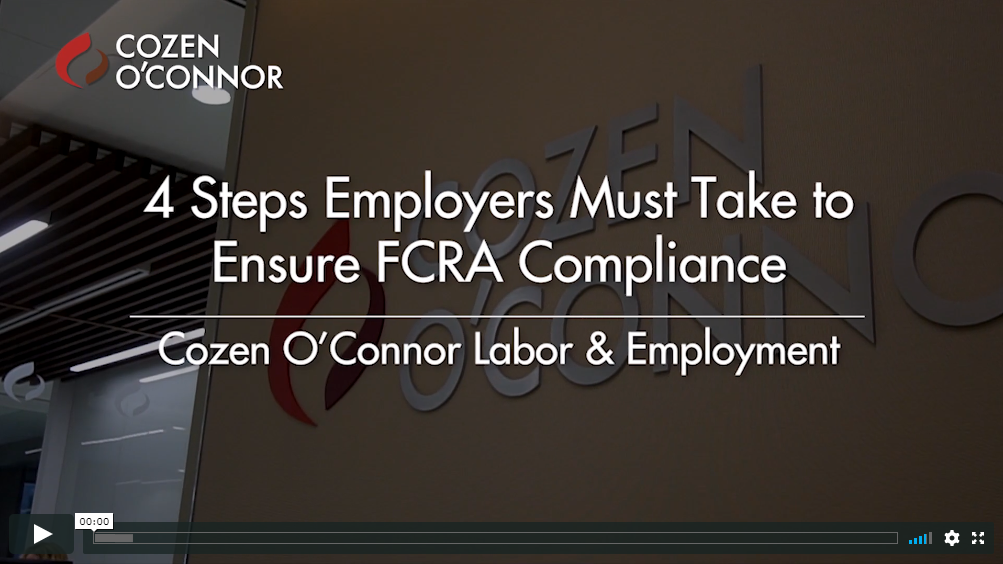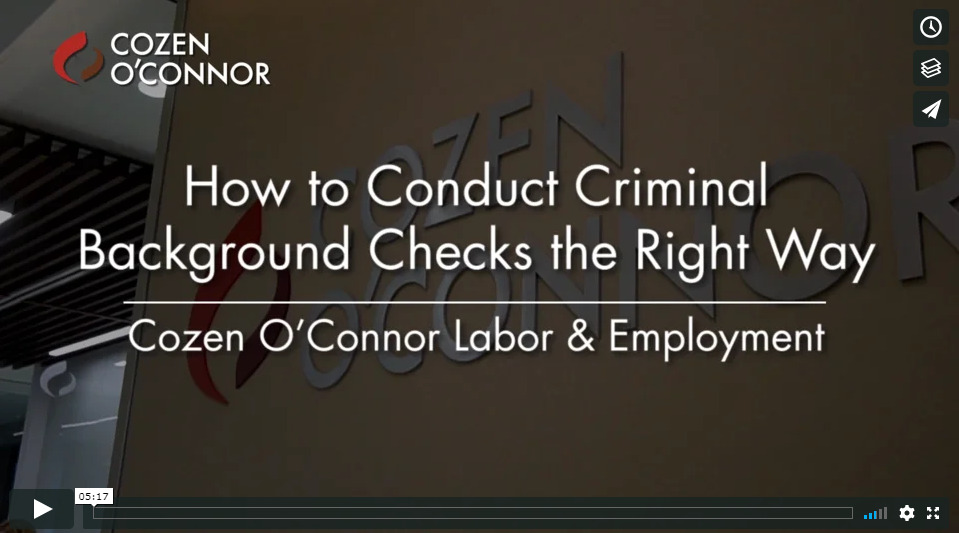For the past several years, the issue of joint employer status has been in a constant state of flux, creating uncertainty for employers. In an effort to clarify this issue, the Department of Labor (“DOL”) issued a proposed rule on April 1, setting forth a four-factor balancing test to determine whether a joint employment relationship exists. These factors include whether the putative joint employer: Read more ›
The Joint Employer Rollercoaster Continues: DOL Announces Proposed Changes
DOL Launches New Pilot Program on Discretionary Suspensions and Debarments
On Tuesday, the Department of Labor (DOL) announced a new pilot program for discretionary suspension and debarments to “ensure accountability and protect the federal government” from companies that have engaged in inappropriate or illegal conduct. The pilot program will be in effect from April 2019 to April 2020. Read more ›
4 Steps Employers Must Take to Ensure FCRA Compliance
What are the four primary steps that employers must take in the Fair Credit Reporting Act (FCRA) process for onboarding an applicant? Bethany Salvatore and Bryant Andrews discuss FCRA requirements and how employers can protect themselves from liability.
Can an Airport Skycap’s Complaint About the Poor Tipping Habits of French Soccer Players Really Become a Federal Case?
Yes!
One of the least appreciated federal workplace laws is Section 7 of the National Labor Relations Act, the 1935 law which gives most private sector employees in the U.S. the right to form and join unions. Section 7 of the Act, which applies with equal force in non-unionized and unionized workplaces, says that employees have “the right to self-organization, to form, join or assist labor organizations … and to engage in other concerted activities for the purposes of collective bargaining or other mutual aid or protection.” Read more ›
U.S. Department of Labor Publishes Notice to Update “Regular Rate” Regulations
Breaking its 50-year silence on the matter, on March 28 the U.S. Department of Labor announced its intention to update the federal regulations explaining how to calculate the “regular rate of pay” for non-exempt employees. Accurately calculating the regular rate is an essential step in paying the correct amount of overtime pay at one-and-one-half times the regular rate when a non-exempt employee works more than 40 hours in a workweek. The regulations governing regular rate requirements have not been updated since 1968, even though pay practices have changed significantly. Read more ›
Workplace Wellness Programs – Key Legal Considerations
Wellness programs have been, and continue to be, of interest to both employees and employers. Employees are more and more aware of healthy living initiatives. Similarly, employers are being inundated with information about the importance of employee health and workplace productivity. Due to mutual interest, it is tempting to jump into the implementation of new wellness programs with both feet. Beware, however, as there are hidden concerns in wellness program implementation and maintenance. The following are a few of the key issues to consider. Read more ›
Protecting Your Trade Secrets: Implementing an Effective Exit Protocol
We have previously posted on HR Headaches about the practical steps employers can take to protect their company’s trade secrets. You can find that post here. With this edition, we dive a bit deeper into the strategies and safeguards companies can deploy to prevent their trade secrets from walking out the door along with a departing employee. Read more ›
How to Conduct Criminal Background Checks the Right Way
Criminal background checks are helpful in not only identifying applicants who might not be suitable for a job, but in limiting the potential liability associated with negligent hiring claims. Bethany Salvatore and Bryant Andrews answer your questions about when to conduct criminal background checks, how to conduct them, and how to protect your company from liability.
Seventh Circuit Locks External Applicants Out of ADEA Disparate Impact Claims
It is not uncommon for a job posting state that the ideal candidate is a person with a certain number of years of relevant experience. Setting a target range of years of experience signals to applicants the level of complexity of the work or the skill level required, and can assist applicants in determining whether they would be a good fit for the job. One unintended consequence of such a prerequisite, however, is that individuals over the age of 40 may be disqualified or self-select out of the pool of eligible candidates. Read more ›
The NLRB’s Newest Take on Who Is an Employee under the National Labor Relations Act
On January 25, 2019, the National Labor Relations Board (“NLRB”) issued an important decision in SuperShuttle DFW, Inc. and Amalgamated Transit Union Local 1338, 367 NLRB No. 75, Case 16-RC-010963 (Jan. 25, 2019), holding 3-1 that franchisee drivers who operated shared ride vans were independent contractors, not employees, under the National Labor Relations Act (“NLRA”). In SuperShuttle, the Board found that the franchisee drivers were required to purchase or lease a van and enter into a franchise agreement with strong indemnification provisions in favor of the operator. The drivers also had total control over their work schedules, determining how much or how little to work, and had discretion on what trips to accept. According to the Board, these factors demonstrated a significant opportunity for economic gain, as well as a significant risk of loss. Read more ›



